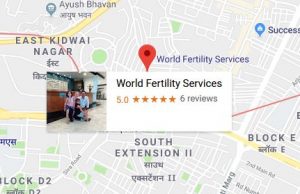When a couple tries to conceive naturally, this means the sperm from a man and the egg from a woman meets at one place which is called the woman’s fallopian tube however if the couple failed to do this naturally than they need not to worry as nowadays science has invented various other ways and IVF is one of those. IVF is a treatment that involves the fertilization of eggs outside the woman’s body. With the help of IVF treatment woman’s own eggs removed and fertilized in a laboratory using sperm sample or using either donated sperm or donated eggs or both.
The next step, the fertilized egg, which is an embryo, is implanted in a woman’s womb through surgery. This one cycle of IVF takes between four and seven weeks.
IVF can be recommended due to the following reasons:
- One has been diagnosed with unexplained infertility.
- If woman’s fallopian tubes are blocked.
- Other techniques such as fertility drugs or intrauterine insemination (IUI) have not been successful.
- The male partner has the fertility problems.
- If one is using the partner’s frozen sperm in the treatment and IUI is not suitable.
- If donated or frozen eggs are used in treatment.
- If one is using embryo testing to avoid passing on a genetic condition to the child.
Working Condition of IVF techniques vary from person to person, however, to start this treatment one will need to complete the various consent forms may be your partner also require to have blood tests to screen the HIV, hepatitis B, hepatitis C and human T-cell lymphotropic virus (HTLV) I and II.
Followings are the stages for women:
A.Extinguish the natural monthly cycle:This is the first step one will be given a drug to extinguish the monthly cycle, which can be administered by yourself in a form of injections or nasal spray. This treatment will continue about for two weeks.
B.Increase the egg supply: After the natural cycle extinguishes, one will be given the fertility hormone known as gonadotropin, this injection need to be taken for around 12 days daily. The hormone increases the number of eggs which is produced.
C.Progress:The clinic will keep a check on your progress with the help of drug treatment through ultrasound and blood tests. This process will be completed between 34 and 38 hours before your eggs are due for the collection you will be given the hormone injection which help your eggs to get matured.
D.Egg collection:A hollow needle attached to the ultrasound probe to collect the eggs from the follicles of each ovary. You may experience some cramps, or bleeding from the vagina. After the egg collection, you will be given some medication in the form of injections.
E.Eggs fertilization:Now the next step, your eggs get mixed with your partner or donor’s sperm and kept in the laboratory for 16 to 20 hours after that they are checked for fertilization. Fertilized eggs now called an embryo and they will grow in the laboratory for up to six days. The embryologist will monitor the development of the embryos and then the best embryo can be chosen for transfer and rest remaining will freeze for future use.
F.Embryo Transfer: If you are under the age of 40, then two embryos can be transferred. If 40 or over then maximum three can be transferred. The number of embryo transfer is restricted because of the high risk of multiple births. During the procedure, a doctor or nurse will insert a speculum into your vagina. This is similar to having a cervical smear taken, when a speculum is used to hold the vagina open so the cervix is visible.
A fine tube (catheter) is then passed through the cervix, normally using ultrasound guidance. The embryos are passed down the tube into the womb. This is normally a pain-free procedure and usually no sedation is necessary, but you may experience a little discomfort because you need a full bladder if ultrasound is used.



 WhatsApp us
WhatsApp us